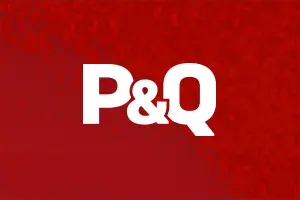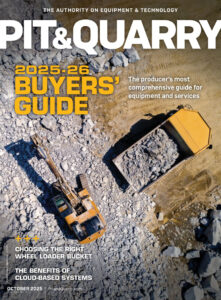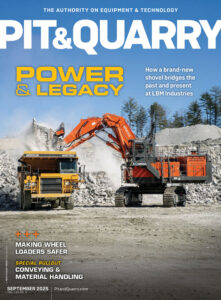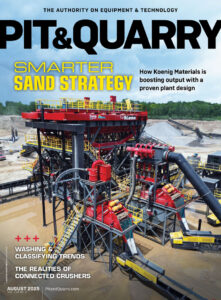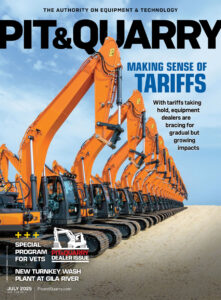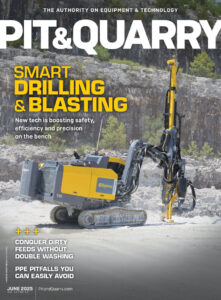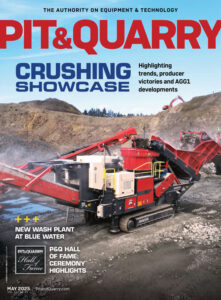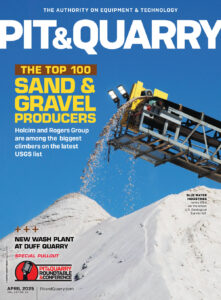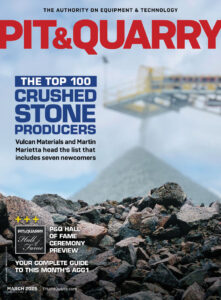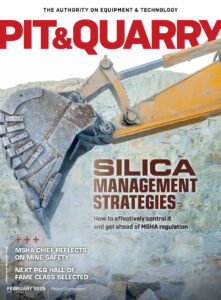Author
Open territory: Boosting uptime with synthetic media
Producers boost throughput and uptime with the maximum open area and wear life of synthetic media. Myth or fact – if you switch from wire cloth to modular synthetic media, you lose open area? Some may say it is fact; however, more operations are finding that notion to be a myth. Some producers are realizing greater throughput and uptime with the maximum open area and wear life of modular synthetic media. Such is the case for Winter Brothers Material Co., a family-owned sand and gravel operation that has been supplying the aggregate needs of the St. Louis area for nearly 70 years. The two founding brothers, George “Pete” Winter and Robert A. Winter led river trips in the region during the 1930s, and after serving in World War II they returned to the area and established the company in 1946. Located on the Meramec River, a tributary of the Mississippi, Winter Brothers mines an alluvial deposit that is unique as to particle shape, uniformity and purity. “Our region is blessed… Keep Reading
Super-size it
Taking a look at the big, bigger and biggest screening operations at an enormous Great Lakes quarry. The mega 12-story-tall screen house at the Rogers City Quarry remains a landmark engineering feat amidst what is said to be one of the world’s largest open-pit limestone quarries. The structural steel-and-brick-faced building shields a massive circuit from the region’s often-blustery freezing climate. Monolithic in scope, a total of 64 screens process the material feed, sizing and separating from floor to floor. A variety of products are sent to stockpiles along the descent, with the finest material landing on the first floor as sand. “The U.S. Steel group assembled this screening building in the 1930s to supply aggregate to its mills over the next several decades. They had a great deal of foresight as to its layout and overall efficiency,” says Ray LeClair, area manager for the Great Lakes division of Carmeuse Lime & Stone, which bought the quarry in 2008. Located in Rogers City, Mich., the quarry mines about 3,000 acres of… Keep Reading
Rollin’ on the river
The Port of Coeymans is engineered for efficient bulk material handling and transport. Along the Hudson River in upstate New York, the Port of Coeymans is a rapidly growing, full-service marine terminal located about 10 miles south of Albany and 110 miles north of New York City. The 400-acre port is privately owned by Carver Cos., which includes a construction and a sand-and-gravel division. For Carver Sand & Gravel, an aggregate operation with nine locations in four counties, the port offers the advantage of direct access to 3,500 ft. of riverfront property with the ability to ship large volumes of material on barges, while freeing up the roads from significant truck traffic and providing a considerable savings to its customers. In addition to shipping its aggregate products for bridge, highway and large-scale landscaping products, the terminal leases acreage and warehouse space to more than a dozen other companies, and also offers deep-water shipping services. Shortly after its opening in 2009, the port became the assembly point for several New York… Keep Reading
Getting the green light
Sustainable environmental initiatives pave the way for a coveted California coastal-zoned expansion permit. There is no shortage of potential roadblocks when it comes to permitting. Even the best and the brightest have fallen short in this pursuit. But for one coastal-zoned quarry, a long permitting process resulted in sweet, unopposed success – something to be savored by Richard DeAtley, president of West Coast Aggregates, which describes itself as “an environmentally concerned company.” In partnership with his savvy consultant, DeAtley employed several winning strategies, each just as important as the other. Their meticulous game plan included highly creative environmental impact mitigation; the enlistment of key-decision-maker support via open information sharing; and an ongoing education campaign on the value of maintaining a local source of aggregate products. With those initiatives in play, the eventual jackpot was the permitting of reserves exceeding 52 million tons at the Pilarcitos Quarry, which is located near the California coastal city of Half Moon Bay. Operating five locations, West Coast Aggregates processes a variety of drain rock… Keep Reading
Jaw crusher maintenance
A lot can be saved or achieved by giving your machine the attention it needs, including costs and time your crews could be spending elsewhere. With proper planning and preparation, maintenance programs can be made easier – and more effective. Importantly, operations can meet time management, cost savings and safety goals by employing good maintenance strategies. “Successful jaw crusher maintenance requires the right resources, the right tools and the right approach,” says Bill Macini, a Telsmith service technician. Certainly when an operation is down, whether for preventive maintenance or component failure, there is always the pressure to get the plant up and running as soon as possible. “So workers may take shortcuts that ultimately cost the operation more in the long run,” Macini says. “Crews need to be trained in the proper methods, and management needs to provide the support and resources to do the job correctly. Macini offered several tips to enhance your own maintenance. Cleanliness is key: Keep oil systems free of contamination. With a “production, production, production… Keep Reading
More than media
Sustainable screening solutions combine media panels with bigger-picture benefits. Sustainability is a major mission for CalPortland, the Northwest’s largest supplier of stone, sand, gravel, cement and ready-mix concrete. Operating in the Portland Harbor since the 1960s, the company transports its high-quality products into the marketplace primarily by barge, helping to alleviate road congestion and keeping prices competitive. With each barge representing between 60 to 100 truck loads, thousands of truck trips are eliminated annually. And that is just one example of the company’s many energy-saving practices. From its Santosh aggregate plant in Scappoose, Ore., sand and gravel is shipped up the Columbia and Willamette Rivers for use in general construction, FAA, WDOT and ODOT projects throughout the region. The operation mines a sand and gravel deposit established by the cataclysmic Missoula floods that swept down the Columbia River Gorge at the end of the last ice age. In line with the CalPortland mission, the Santosh Plant has often been recognized for its energy efficiencies, as it fosters a steady, sustainable… Keep Reading
Train and maintain
Automatic belt alignment solutions help prevent material spillage and eliminate the need to constantly monitor alignment. Today’s top belt training technologies are proven solutions that minimize maintenance manpower. They are automatic solutions that continuously keep the belt aligned, allowing the crew to attain that coveted set-it-and-forget-it attitude. After all, who wants to continuously adjust and monitor a belt – especially when the one moment you walk away is the one moment that the belt rips? “One of the best belt-tracking solutions is the automatic return training idler, which provides continuous alignment, centering the belt and reducing or eliminating any belt damage,” says Jarrod Felton, vice president of sales, marketing and engineering for Superior Industries. “Automatic return training idlers are particularly effective for operators of portable equipment or mobile track-mounted equipment. They are an ideal choice in a variety of tough applications; or in applications where self-aligning idlers do not fit. Return training idlers can be applied to either high- or low-end belts,” he says. Felton points to a couple of… Keep Reading

